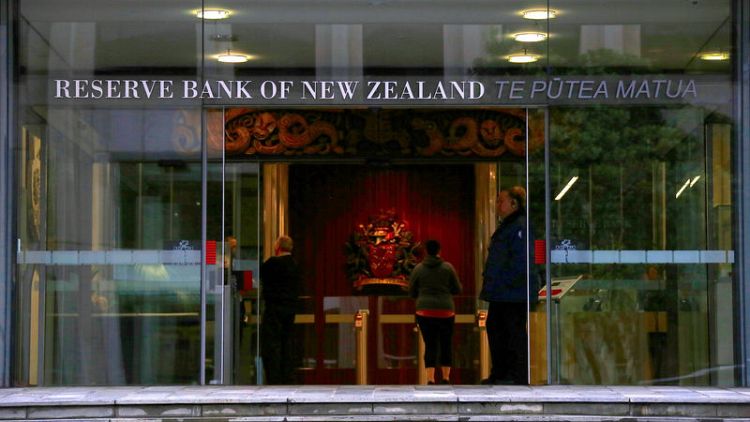By Praveen Menon
WELLINGTON (Reuters) - New Zealand's central bank is all but certain to cut rates to record lows next week, and keep the door open for more easing as global policymakers unfurl a fresh burst of monetary stimulus to fight slowing growth in the face of intensifying trade disputes.
The threat to the global economy was further underscored on Thursday after U.S. President Donald Trump threatened to impose a 10% tariff on the remaining $300 billion (£247.8 billion) of Chinese imports, jolting financial markets already shaken up by the widening fallout of the trade war.
That would likely give the Reserve Bank of New Zealand (RBNZ) more than enough reason to ease policy once again next Wednesday, with all 16 economists polled by Reuters expecting a cut of 25 basis points in the official cash rate (OCR) to 1.25%.
The central bank, which paused in June after cutting in May, may not stop there as many economists expect the cash rate at 1% by the end of the year.
"After next week’s OCR cut, we expect that the domestic economy will remain slow for long enough to prompt the RBNZ to cut the OCR once more in 2019," said Westpac Chief Economist Dominick Stephens.
"That cut is most likely to be delivered in November, when the Monetary Policy Committee has the benefit of the full quarterly analysis undertaken by bank staff," said Stephens.
Markets are now pricing a 100% probability of a quarter point rate cut to 1.25% on Wednesday [RBNZWATCH]. New Zealand's two-year sovereign yield hit a new low of 1%, taking it 50 basis points below the current cash rate.
New Zealand is not alone in opening the money spigot. The year-long Sino-U.S. trade war has been a major worry for policymakers around the world, as the dispute has disrupted global supply chains, dented profits and put factories in reverse gear.
Earlier this week, the U.S. Federal Reserve cut rates a quarter point for the first time since the financial crisis, while the Reserve Bank of Australia has signalled rates would stay low for an extended period, following cuts in both June and July.
At RBNZ's last meeting in June, Governor Adrian Orr said further cuts to borrowing costs may be needed given growing economic risks at home and abroad.
Since then, there has been little news to mollify those concerns - a fact driven home by Trump's shock Tweets on Thursday threatening more tariffs on the remaining Chinese imports.
Concern over a no-deal Brexit is also growing, raising further risks to the global economy.
Domestically, New Zealand's business outlook hit a 11-month low in July, consumer confidence sank, prices of its main dairy produce dipped and GDP growth is expected to be weak.
"All considered, there is little new information which could deter the Monetary Policy Committee from following through on its clear intention at the last meeting to lower rates in August," said Ben Udy of Capital Economics.
"But we don’t think that one additional rate cut will be enough to drive a meaningful improvement in the economic outlook."
(Editing by Shri Navaratnam)



